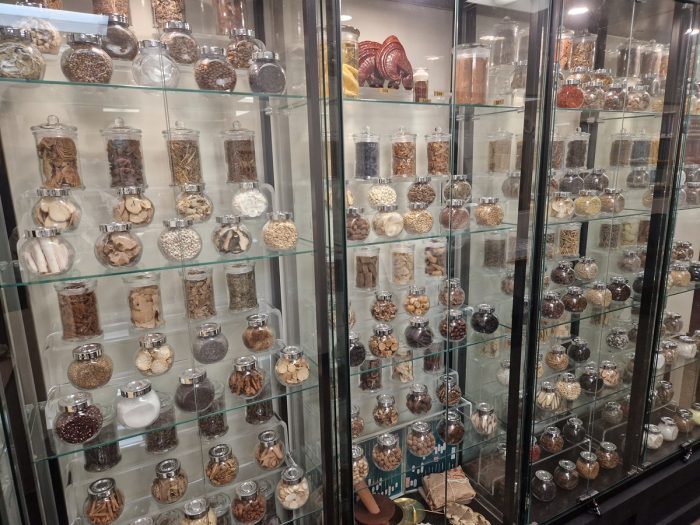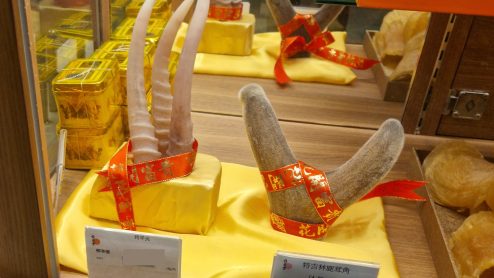Collaboration is key to achieving traditional Chinese medicine without using threatened wildlife
Did you know that work to develop artificial alternatives for bear bile, pangolin scales, rhino horn and saiga horn has been ongoing at China’s top research institutions for more than 15 years?
And that studying the therapeutic substances and artificial substitutes of endangered animal ingredients is now a project of State priority?
If you didn’t, it’s not so strange when you think about it – when was the last time you heard a report from Pfizer or AstraZeneca about the next big drug they are developing, before they’ve registered the patent and the product is ready to hit the market?

Attendees at the New York conference (c) Coalition for Wildlife Protection in TCM
Even the majority of the traditional Chinese medicine (TCM) practitioners attending the recent Second Wildlife Protection in Traditional Chinese Medicine Conference in New York – hosted by the Coalition for Wildlife Protection in TCM – were unaware of these developments.
EIA is encouraged by the research and the positive developments in Government support in China to move away from the use of threatened species in TCM.
However, while secrecy around the development of new medicines is common, it would be good for any shift in policy to be widely publicised as the blatant marketing of threatened species products by wildlife traders and certain pharmaceutical companies is casting a dark shadow over the entire sector despite the diligent research and educative efforts by senior TCM academics and practitioners to move away from the exploitation of such wildlife.
Many traditional medicine practitioners feel misunderstood and stigmatised as the culprits of wildlife population declines by conservation organisations and the mass media, a sentiment we heard in our engagement with traditional health practitioners in South Africa and again at this conference.
Such negative perceptions no doubt hinder collaborative efforts to combat the unsustainable and illegal trade in wildlife.

Ceres presenting at the conference (c) Coalition for Wildlife Protection in TCM
The reality is, it cannot be ignored that the use of threatened wildlife for TCM, legal or illegal, has been a significant driver of the poaching and killing of vulnerable species such as tigers, leopards, pangolins, rhinos, bears, saiga and many more over the past decades, adding further pressure to their survival.
In recognition of the negative impacts of this unsustainable consumption, many TCM practitioners have gone to great lengths to distance themselves from the use of wildlife.
EIA believes we can achieve far more together; strengthening partnerships and finding allies to foster collaborative efforts are among our strategic priorities.
In the true spirit of safeguarding One Health, we must be interdisciplinary in our approach. An important element is for the conservation and TCM sectors to learn from each other, so we can highlight each other’s successes and use robust evidence to advance our cause.
EIA would welcome regular exchanges with like-minded TCM practitioners, academics, manufacturers and distributers such as that of the Coalition so we can stay up to date on their research and policy insights to ensure our correct understanding and presentation of TCM in our campaigning.
In turn, the TCM sector, including the Coalition, would benefit from regular exchanges with EIA and other conservation organisations to gain a better understanding about the conservation status of wildlife species and the unsustainable and illegal trade linked to medicinal use for their efforts to educate and influence stakeholders.
Together, we can amplify each other’s voices and more effectively influence other stakeholders to achieve sustainable, green, wildlife-free and environmentally friendly treatments for the health of human beings and the Earth.

A display of TCM ingredients (c) EIA
The Coalition for Wildlife Protection in TCM is a network of practitioners, educators, researchers, manufacturers and distributors who do not use endangered wild animal products in their treatments. Its mission is to enhance awareness of the need for wildlife protection within the TCM sector and for the public.
EIA was invited to the conference to speak about our work and outline how wildlife exploitation by certain companies in the pharmaceutical and financial sectors undermine efforts to ensure ethical, sustainable practice and One Health.
We remain committed to highlighting regulatory loopholes and exposing wildlife traffickers and companies who engage in unsustainable trade of threatened species.




